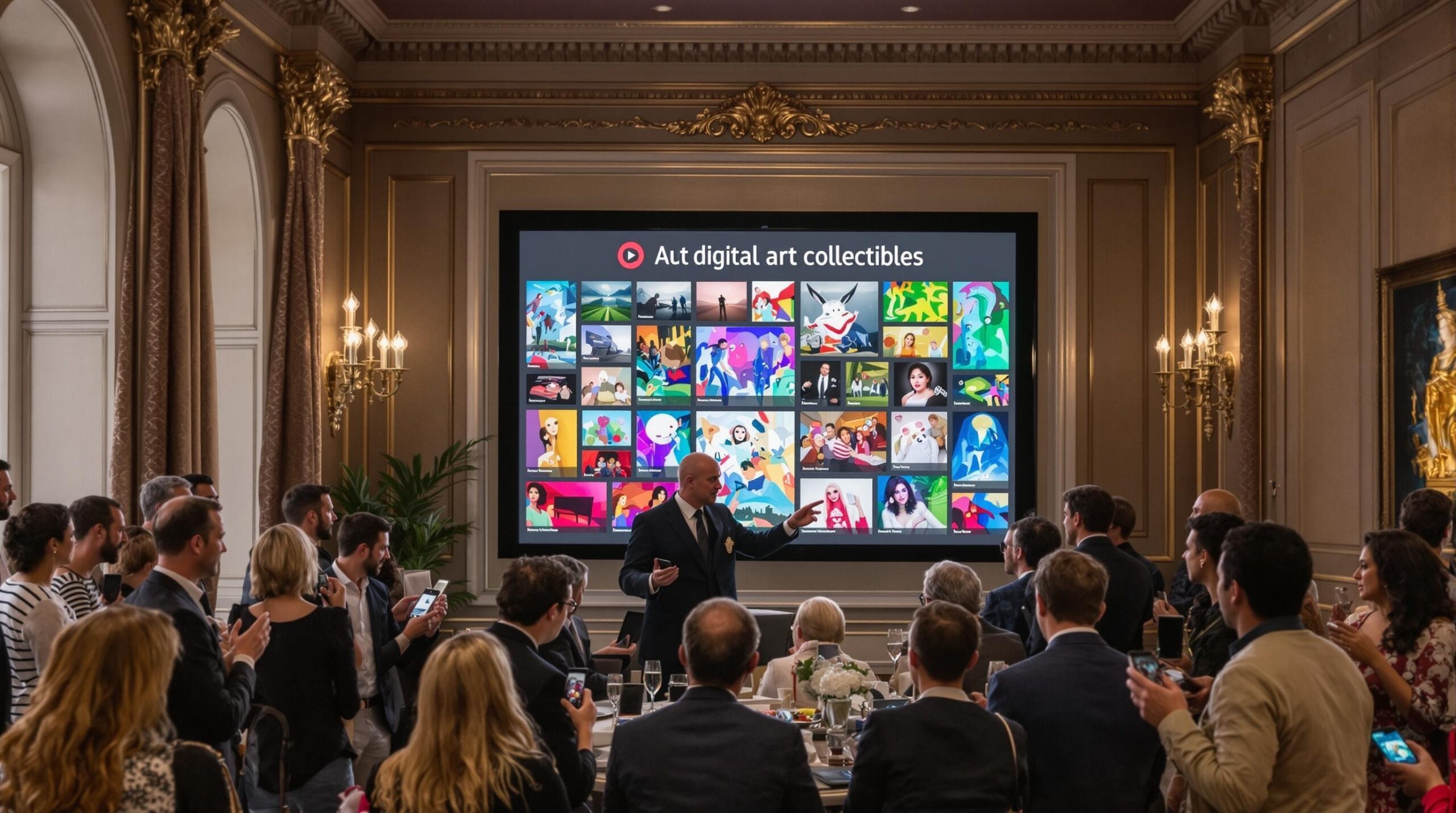Digital art collectibles are rapidly transforming the landscape of traditional auction houses. These digital assets are introducing new dynamics to the auction world. The fusion of technology and art creates opportunities and challenges that were once unimaginable. As auction houses adapt, they are redefining the future of art collections.
The Rise of Digital Art Collectibles
Digital collectibles made their mainstream debut with Non-Fungible Tokens (NFTs). An NFT is a blockchain-based asset representing ownership in the digital realm. Unlike cryptocurrency, NFTs are unique and hold value based on factors like rarity and desirability.
Digital art, certified by NFTs, offers artists new revenue streams. It allows them to monetize their work directly without intermediaries, democratizing the art world and providing equal opportunities for established and emerging artists.
Disruption of Traditional Auction Houses
The increasing popularity of digital collectibles has disrupted the traditional art auction market. Auction houses, known for their historical artifacts and classic paintings, now face a new category of digital assets. This shift has compelled these institutions to redefine their strategies.
Adopting NFTs has enabled auction houses to tap into a younger, tech-savvy audience. The new demographic is more inclined to spend on digital assets. This newfound interest has increased foot traffic at auction events, boosting their overall appeal.
Transition and Adaptation Strategies
Traditional auction houses embracing digital art have redesigned their business models. This requires significant technological investments, including blockchain infrastructure. These institutions must also ensure the authenticity and provenance of digital collectibles, a new concept.
Many auction houses now hire blockchain experts and digital curators. These professionals guide the auction process and ensure transparency. Moreover, auction houses host specialized digital art events to attract enthusiasts and investors.
Challenges in Valuation and Authentication
One of the primary challenges of trading digital art is valuation. Unlike physical art, digital pieces don’t come with a tangible legacy. They require a new appraisal framework based on factors like artist reputation and historical blockchain data.
Another hurdle is authenticating digital art. Blockchain technology ensures transparency but requires constant monitoring. Auction houses are developing sophisticated systems for fraud detection and prevention. Despite continuous efforts, maintaining security remains a constant challenge.
Impact on Artists and Collectors
For artists, NFTs have opened up a vast new market. Digital art can now reach global audiences instantly, transcending geographical barriers. Artists retain more control over their work and receive royalties from secondary sales.
Collectors are also benefiting from the rise of digital art. Collecting digital pieces offers an interactive experience, often featuring multimedia elements like videos and animations. This novel engagement shifts the collector’s focus from mere ownership to an immersive art experience.
Influential Digital Art Sales
The sale of “Everyday: The First 5000 Days” by Beeple set a precedent in digital art auctions. Christie’s auction house sold it for $69 million in March 2021, setting new benchmarks. This sale legitimized NFTs in the eyes of traditional art collectors and highlighted the potential for digital art to appreciate in value over time.
Other notable sales include Cryptopunks and Bored Ape NFTs that fetched millions. These iconic sales further illustrate the growing stature of digital art collectibles. Auction houses now view such pieces as valuable assets across their portfolios.
Legal Considerations and Intellectual Property
The rise in digital art has ushered in new legal complexities for auction houses. Issues of intellectual property rights require careful navigation, and contracts and royalty agreements must ensure clear terms to avoid disputes.
Traditional rules concerning art ownership are being rewritten for the digital age. Auction houses collaborate with legal experts to draft clear guidelines and contracts. Legal clarity fosters trust among both artists and collectors.
Environmental Concerns and Solutions
The environmental impact of NFTs hasn’t gone unnoticed. Critics argue that blockchain mining consumes immense energy, contributing to carbon emissions. Auction houses are aware of these concerns and are exploring solutions.
Many auction platforms are now shifting to more sustainable blockchain networks. Ethereum is moving towards a less energy-intensive proof-of-stake model, which helps balance the environmental impact of digital art collections.
Future Trends in Digital Art Auctions
As technology evolves, the future of digital art looks promising. Augmented Reality (AR) and Virtual Reality (VR) are set to revolutionize art viewing experiences. Auction houses are experimenting with AR and VR to attract tech-savvy collectors.
Another emerging trend is fractional ownership of NFTs. This allows multiple investors to own a piece of high-value digital art. Auction houses are exploring this model to make digital art investment more accessible.
Conclusion
Integrating digital collectibles into traditional auction houses marks the beginning of a new era. As auction houses adapt to new technologies, they redefine their role in art. Digital art can potentially expand the market and attract a more diverse audience.
This ongoing evolution presents both challenges and opportunities for auction houses. Their future success depends on their ability to innovate and embrace change. Digital art collectibles are not just a trend but a transformative force reshaping the art collection landscape.

